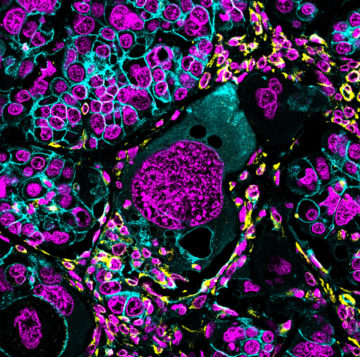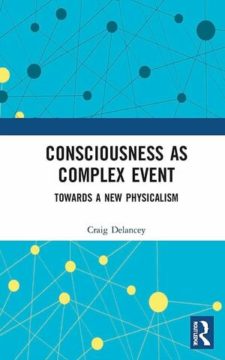Category: Recommended Reading
Saturday Poem
Poem
If we have no soul
something aches
in us anyway
Heaves our breath
pumps our blood
Sun thrown across treetops
Do you see New Mexico?
Windstorms
crack across it
days break
against it
I hurt
for dry dirt
big sky
bell in a tower
sage
across the eye
Burnt land
old sand carcass
your rosebuds
are hardening
your leaves turning
my heart
burning
by Natalie Goldberg
from Top of My Lungs
The Overlook Press, 2002
The Hierarchy of the Global Political Economy
 Herman Mark Schwartz in The Syllabus:
Herman Mark Schwartz in The Syllabus:
We noticed you aren’t using the term neoliberalism much in your recent work. While we’re not partisan regarding whether neoliberalism is dead or alive, what do you think about the utility of framing debates in global political economy in those terms? Have there been structural changes in the last five to ten years that merit retiring that term in your field?
The short version is that I think that neoliberalism is one of those empty labels like financialization and globalization, which conceal much more than they reveal. Financialization, yeah, it’s about money, but what specifically? Globalization, it’s about the integration of what had been somewhat insulated parts of the global economy, but so what? And neoliberalism, similarly, only tells us that we’re no longer living in what Bob Jessop and others have called the Keynesian welfare state model. As President Nixon once said, “Even though we’re all Keynesians, we’re not in Kansas anymore.”
More than a five- or ten-year perspective, you really need to go back 30, 40, 50 years to understand what’s going on. Much as we – and here I use “we” very expansively – were living in welfare states that were constructed in the ’30s, ’40s, but especially the ’50s and ’60s, today we are living in an economy and a set of social structures that were already emerging at the end of the ’70s, ’80s, and ’90s.
More here.
Grievance and Reform
Kate Mackenzie and Tim Sahay in The Polycrisis:
The precursor of 2022’s energy crisis was 2020–2021’s vaccine apartheid. These shortages were in no way natural but reflected financial and geopolitical hierarchies: those with more power and resources bid up prices and developing countries lost out in the process. In the case of vaccines, millions of lives were lost. The energy crisis too is a question of life and death. Expensive gas-powered air conditioners in Europe subsidized with nearly a trillion euros of deficit-financing really did mean lights out for millions of Pakistanis and Bangladeshis.
In both these cases, developing countries were reminded that the existing world order is rigged against them. Global inequality rose sharply. Their shortages of money (especially the right kind of money) and inability to borrow cheaply put them at the back of the queue. The grim fact that the West not only denied poor countries IP for technology to make their own mRNA vaccines in the hour of distress, but hoarded vaccines past their sell-by date, revealed the system’s bankruptcy. Ajay Banga, the new World Bank chief, described the growing mistrust “pulling the Global North and South apart at a time when we need to be uniting.”
On August 24, more than sixty leaders of the largest developing countries met at the BRICS Summit in Johannesburg, chaired by South African President Ramaphosa. High on the meeting’s agenda were multilateralism, reform, and sustainable development. Brazil’s President Lula Inácio da Silva, who founded the BRICS group in 2009, bluntly summarized: “We cannot accept a green neocolonialism that imposes trade barriers and protectionist policies under the pretext of protecting the environment.” By the summit’s end the group had announced six new members: Ethiopia, Egypt, Argentina, Iran, and Saudi Arabia.
More here.
The difference between winning and succeeding
(Note: Thanks to Kevin Ham)
Liberalism in Mourning
 Samuel Moyn in Boston Review:
Samuel Moyn in Boston Review:
Cold War liberalism was a catastrophe—for liberalism. This distinct body of liberal thought says that freedom comes first, that the enemies of liberty are the first priority to confront and contain in a dangerous world, and that demanding anything more from liberalism is likely to lead to tyranny.
This set of ideas became intellectually trendsetting in the 1940s and 1950s at the outset of the Cold War, when liberals conceived of them as essential truths the free world had to preserve in a struggle against totalitarian empire. By the 1960s it had its enemies, who invented the phrase “Cold War liberalism” itself to indict its domestic compromises and foreign policy mistakes. That did not stop it from being rehabilitated in the 1990s, when it was repurposed for a post-political age. A generation of public intellectuals—among them Anne Applebaum, Timothy Garton Ash, Michael Ignatieff, Leon Wieseltier, and many others—styled themselves as successors to Cold War liberals, trumpeting the superiority of Cold War liberalism over illiberal right and left while obscuring just how distinctive it was within the broader liberal tradition. 1989 ushered in the global triumph of freedom, but on Cold War liberalism’s distorted terms.
Then came the election of Donald Trump in 2016, which unleashed a great war over liberalism—a polemical one, at least—and prompted yet another resurgence of Cold War liberalism’s core ideas. Patrick Deneen’s much-discussed assault, Why Liberalism Failed (2018), was met by a crop of liberal self-defenses, almost all of them explicitly or implicitly attempted in Cold War terms. Francis Fukuyama, Adam Gopnik, and Mark Lilla all wrote book-length versions of why Cold War liberalism still had legs, but literally thousands of essays and websites, and even whole magazines such as The Atlantic, offered the same message in frantic response to Trump’s breakthrough. Organized as much against the left as the right, these defenses not only rang hollow; they have failed to forestall the political crisis they promised to transcend.
More here.
Stress Responders: Giant Polyploid Cells
Elizabeth Pennisi in Science:

When Vicki Losick got her Ph.D. and joined a fruit fly lab at the Carnegie Institution for Science in 2008, its head announced that he expected his postdocs to launch new fields of inquiry. She chose a then-fashionable focus: stem cells, versatile cells that specialize into other cell types and play critical roles in embryonic development and the renewal of adult tissues. Losick wondered whether they also help in wound repair. So, she and another postdoc, Don Fox, began stabbing fruit flies with a tiny needle, hoping to document stem cells coming to the rescue.
Instead, the two postdocs, working independently, saw other cells near the wounds behaving oddly. The cells grew and prepared to divide by duplicating their DNA. Then they stalled, each remaining a single, enlarged cell with multiple copies of its genome. “I was shocked,” recalls Losick, now at Boston College. When she and Fox looked at the fly wound sites a few days later, they saw signs that these so-called polyploid cells, and not stem cells, were the major wound healers. At the puncture site, supersize cells with multiple nuclei quickly closed up the wound. “Simultaneously we found the same thing [and it] had nothing to do with stem cells,” Fox recalls.
More here.
Friday, September 1, 2023
Consciousness is a great mystery, but its definition isn’t
Eric Hoel in The Intrinsic Perspective:
There’s an unkillable myth that the very definition of the word “consciousness” is somehow so slippery, so bedeviled with problems, that we must first specify what we mean out of ten different notions. When this definitional objection is raised, its implicit point is often—not always, but often—that the people who wish to study consciousness scientifically (or philosophically) are so fundamentally confused they can’t even agree on a definition. And if a definition cannot be agreed upon, we should question whether there is anything to say at all.
Unfortunately, this “argument from undefinability” shows up regularly among a certain set of well-educated people. Just to given an example, there was recently an interesting LessWrong post wherein the writer reported on his attempts to ask people to define consciousness, from a group of:
Mostly academics I met in grad school, in cognitive science, AI, ML, and mathematics.
He found that such people would regularly conflate “consciousness” with things like introspection, purposefulness, pleasure and pain, intelligence, and so on. These sort of conflations being common is my impression as well, as I run into them whenever I have given public talks about the neuroscience of consciousness, and I too have found it most prominent among those with a computer science, math, or tech background. It is especially prominent right now amid AI researchers.
So I am here to say that, at least linguistically, “consciousness” is well-defined, and that this isn’t really a matter of opinion.
More here.
Why Mathematical Proof Is a Social Compact
Jordana Cepelewicz in Quanta:
 In 2012, the mathematician Shinichi Mochizuki claimed he had solved the abc conjecture, a major open question in number theory about the relationship between addition and multiplication. There was just one problem: His proof, which was more than 500 pages long, was completely impenetrable. It relied on a snarl of new definitions, notation, and theories that nearly all mathematicians found impossible to make sense of. Years later, when two mathematicians translated large parts of the proof into more familiar terms, they pointed to what one called a “serious, unfixable gap” in its logic — only for Mochizuki to reject their argument on the basis that they’d simply failed to understand his work.
In 2012, the mathematician Shinichi Mochizuki claimed he had solved the abc conjecture, a major open question in number theory about the relationship between addition and multiplication. There was just one problem: His proof, which was more than 500 pages long, was completely impenetrable. It relied on a snarl of new definitions, notation, and theories that nearly all mathematicians found impossible to make sense of. Years later, when two mathematicians translated large parts of the proof into more familiar terms, they pointed to what one called a “serious, unfixable gap” in its logic — only for Mochizuki to reject their argument on the basis that they’d simply failed to understand his work.
The incident raises a fundamental question: What is a mathematical proof? We tend to think of it as a revelation of some eternal truth, but perhaps it is better understood as something of a social construct.
More here.
Iran’s street art shows defiance, resistance and resilience
Pouya Afshar in The Conversation:
 A recent rise in activism in Iran has added a new chapter to the country’s long-standing history of murals and other public art. But as the sentiments being expressed in those works have changed, the government’s view of them has shifted, too.
A recent rise in activism in Iran has added a new chapter to the country’s long-standing history of murals and other public art. But as the sentiments being expressed in those works have changed, the government’s view of them has shifted, too.
The ancient Persians, who lived in what is now Iran, adorned their palaces, temples and tombs with intricate wall paintings, showcasing scenes of royal court life, religious rituals and epic tales. Following the 1979 revolution and the Iran-Iraq war, murals in Iran took on a new significance and played a crucial role in shaping the national narrative. These murals became powerful visual representations of the ideals and values of the Islamic Republic. They were used to depict scenes of heroism, martyrdom and religious devotion, aiming to inspire national unity and pride among Iranians.
More here.
AI finally beats humans at a real-life sport — drone racing
Consciousness as Complex Event: Towards a New Physicalism
Kelvin J. McQueen at Notre Dame Philosophical Review:
 In Consciousness as Complex Event: Towards a New Physicalism, Craig DeLancey argues that what makes conscious (or “phenomenal”) experiences mysterious and seemingly impossible to explain is that they are extremely complex brain events. This is then used to debunk the most influential anti-physicalist arguments, such as the knowledge argument. A new “complexity-based” way of thinking about physicalism is then said to emerge.
In Consciousness as Complex Event: Towards a New Physicalism, Craig DeLancey argues that what makes conscious (or “phenomenal”) experiences mysterious and seemingly impossible to explain is that they are extremely complex brain events. This is then used to debunk the most influential anti-physicalist arguments, such as the knowledge argument. A new “complexity-based” way of thinking about physicalism is then said to emerge.
Brain complexity has been appealed to before, to try to explain why consciousness seems so intractable. What makes DeLancey’s approach distinctive is two-fold. First, DeLancey does not use some vague and informal notion of complexity. Instead, he uses the formal notion of Kolmogorov complexity, which he refers to as descriptive complexity. Second, this notion is intended to do most of the heavy lifting. In particular, DeLancey is clear that he does not wish to supplement his complexity-based defense of physicalism with other existing strategies (the phenomenal concepts strategy, the ability hypothesis, knowledge by acquaintance etc. (23)). The central claim is that “what makes a phenomenal experience mysterious is its [descriptive] complexity” (21).
more here.
Goodbye, Eastern Europe: An Intimate History of a Divided Land
Piotr Florczyk at The American Scholar:
 The opening sentence of Jacob Mikanowski’s sweeping history of Eastern Europe—“a place,” he asserts, “that doesn’t exist”—calls to mind a seminal 1983 essay by the recently deceased Czech-French novelist, Milan Kundera. In A Kidnapped West: A Tragedy of Central Europe, Kundera reminded his readers that Poland, Hungary, and Czechoslovakia were historically and culturally closer to the West than to the Soviet East, and should therefore be thought of as central rather than eastern European. Alas, his appeal fell on deaf ears, and the region remains “eastern,” shorthand for a place where, rumor has it, nobody smiles and the smell of burned cabbage wafts through the corridors of charmless, concrete apartment blocks. Indeed, western prejudice was never more in evidence than during the early days of Russia’s invasion of Ukraine, when many commentators painted the war as just another incomprehensible scuffle in the other Europe, among the denizens of lands once obscured by the Iron Curtain.
The opening sentence of Jacob Mikanowski’s sweeping history of Eastern Europe—“a place,” he asserts, “that doesn’t exist”—calls to mind a seminal 1983 essay by the recently deceased Czech-French novelist, Milan Kundera. In A Kidnapped West: A Tragedy of Central Europe, Kundera reminded his readers that Poland, Hungary, and Czechoslovakia were historically and culturally closer to the West than to the Soviet East, and should therefore be thought of as central rather than eastern European. Alas, his appeal fell on deaf ears, and the region remains “eastern,” shorthand for a place where, rumor has it, nobody smiles and the smell of burned cabbage wafts through the corridors of charmless, concrete apartment blocks. Indeed, western prejudice was never more in evidence than during the early days of Russia’s invasion of Ukraine, when many commentators painted the war as just another incomprehensible scuffle in the other Europe, among the denizens of lands once obscured by the Iron Curtain.
more here.
Eastern Europe With Jacob Mikanowski
AI predicts chemicals’ smells from their structures
Sara Reardon in Nature:
 An artificial-intelligence system can describe how compounds smell simply by analysing their molecular structures — and its descriptions are often similar to those of trained human sniffers.
An artificial-intelligence system can describe how compounds smell simply by analysing their molecular structures — and its descriptions are often similar to those of trained human sniffers.
The researchers who designed the system used it to list odours, such as ‘fruity’ or ‘grassy’, that correspond to hundreds of chemical structures. This odorous guidebook could help researchers to design new synthetic scents and might provide insights into how the human brain interprets smell. The research is reported today in Science1. Smells are the only type of sensory information that goes directly from the sensory organ — the nose, in this case — to the brain’s memory and emotional centres; the other kinds of sensory input first pass through other brain regions. This direct route explains why scents can evoke specific, intense memories.
“There’s something special about smell,” says neurobiologist Alexander Wiltschko. His start-up company, Osmo in Cambridge, Massachusetts, is a spin-off from Google Research that is trying to design new smelly molecules, or odorants.
More here.
The Song of the Lark by Willa Cather
Friday Poem
The Origins of Utopia
Many people have long felt the desire to do something
With their lives besides consuming goods. They desire
To interact and develop but for this there is no remedy
Calculable in classical economics. This gets me
Wondering. It would be a fine thing, all that flourishing,
Along with everyone else, but also decently private
So as not to burden one’s neighbors with too much noise
Or such a torrent of dumb ideas all at once. Space required
Is also allocated into the general scheme of the better life,
If not the best life, since the latter wedges its dissatisfaction
Into the minds of each of us according to our old desires,
Childhood vistas, incurable heartbreak by the age of sixteen.
It was silly then but also so totally serious that now our leaders
Wage their private warfare, their revenge, and we’re all implicated.
by Darren Bifford
from Numero Cinq Magazine
Thursday, August 31, 2023
The University of Oxford dominated philosophy in the twentieth century
Michael Gibson at City Journal:

In 1963, the philosophers Gilbert Ryle and Isaiah Berlin had lunch with the composer Igor Stravinsky. Ryle, the least famous of the bunch, was the most scathing in his survey of the philosophical landscape. He dubbed the celebrated American pragmatists William James and John Dewey the “Great American Bores.” He condemned the work of French Jesuit Teilhard de Chardin, with its speculation about an emerging world consciousness, as “old teleological pancake.” Then he summed it up in a sweeping crossfire that could serve as the most Oxonian of putdowns: “Every generation or so philosophical progress is set back by the appearance of a ‘genius.’”
What did Ryle have against such geniuses? And is progress in philosophy even possible?
Largely thanks to Ryle and his colleagues, by the 1950s Oxford had ascended to a commanding position in philosophy, at least in the English-speaking world. On the European continent, things were different: German and French philosophers had run headlong down another path. The two broad traditions that emerged from the split after World War I are known as analytic and continental philosophy. The gap between the two styles is vast.
More here.
Sean Carroll’s Mindscape Podcast: Yejin Choi on AI and Common Sense
Sean Carroll in Preposterous Universe:
 Over the last year, AI large-language models (LLMs) like ChatGPT have demonstrated a remarkable ability to carry on human-like conversations in a variety of different concepts. But the way these LLMs “learn” is very different from how human beings learn, and the same can be said for how they “reason.” It’s reasonable to ask, do these AI programs really understand the world they are talking about? Do they possess a common-sense picture of reality, or can they just string together words in convincing ways without any underlying understanding? Computer scientist Yejin Choi is a leader in trying to understand the sense in which AIs are actually intelligent, and why in some ways they’re still shockingly stupid.
Over the last year, AI large-language models (LLMs) like ChatGPT have demonstrated a remarkable ability to carry on human-like conversations in a variety of different concepts. But the way these LLMs “learn” is very different from how human beings learn, and the same can be said for how they “reason.” It’s reasonable to ask, do these AI programs really understand the world they are talking about? Do they possess a common-sense picture of reality, or can they just string together words in convincing ways without any underlying understanding? Computer scientist Yejin Choi is a leader in trying to understand the sense in which AIs are actually intelligent, and why in some ways they’re still shockingly stupid.
More here.
John Stuart Mill vs. the Post-Liberals
Richard V Reeves in Persuasion:
 One hundred and fifty years ago, John Stuart Mill died in his home in Avignon. His last words were to his step-daughter, Helen Taylor: “You know that I have done my work.”
One hundred and fifty years ago, John Stuart Mill died in his home in Avignon. His last words were to his step-daughter, Helen Taylor: “You know that I have done my work.”
He certainly had. During his 66 years of life, Mill became the preeminent public intellectual of the century, producing definitive works of logic and political economy, founding and editing journals, serving in Parliament, and churning out book reviews, journalism and essays, most famously his 1859 masterpiece, On Liberty. Oh, and he had a day job, too: as one of the most senior bureaucrats in the East India Company.
What is too often forgotten about Mill is that he was as much an activist as an academic. Benjamin Franklin exhorted his followers to “either write something worth reading or do something worth writing.” Mill, like Franklin himself, is among the very few who managed to do both.
More here.
